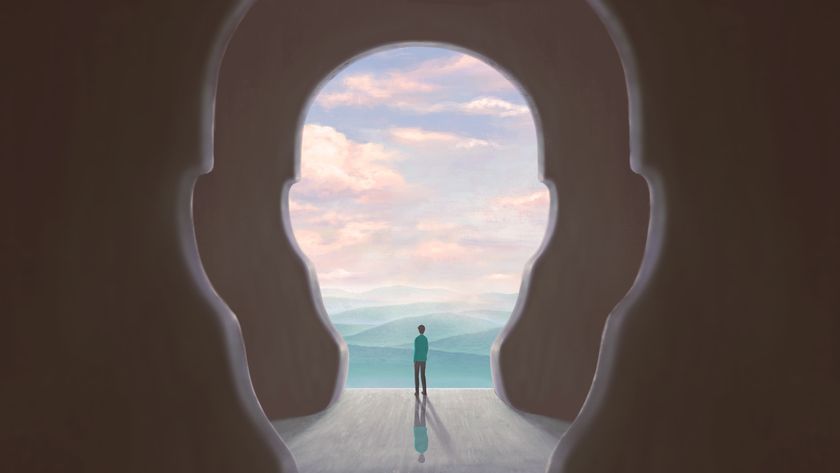
What's the difference between the right brain and left brain?
You may have heard people describe themselves as "right-brained" or "left-brained," but what does that mean?
Are you right-brained or left-brained?
It's a popular question, hovering at the edges of sound neuroscience. The left brain is supposed to be more creative and artistic, the right brain more organized and logical. Indeed, Google "right-brain dominance" or "left-brain dominance," and you'll find endless blog posts on the subject. You'll also find quizzes that purport to tell readers which sort of person they are.
But the real science says there's no such thing as right- or left-brain dominance.
Related: Do we really only use 10 percent of our brains?
In a sweeping two-year study, published in 2013 in the journal PLOS One, researchers looked at the brains of more than 1,000 people and found no evidence for significant differences in brain-side dominance among individuals.
There are differences between the hemispheres though, right?
Yes.
You might not have a more dominant half, but your brain really is split into two hemispheres, left and right.
Sign up for the Live Science daily newsletter now
Get the world’s most fascinating discoveries delivered straight to your inbox.
And the left and right hemispheres are not the same. They are highly similar and redundant, though. Most processes that you'd find on the left side also take place on the right, and vice-versa.
The book "Disorders of the Nervous System: A Primer" (Imperial Company Printers, 1995) by Dartmouth neurologists Dr. Alexander Reeves and Dr. Rand Swenson, quotes Dr. Harold Wolff — one of the great brain scientists of the 20th century — as saying that both sides of the brain have "the capacity to express appropriate feelings, appetites and drives; the capacity [for] … learning, memory, logic, etc.; the capacity to maintain appropriate thresholds and tolerance for frustration and failure, and to recover promptly from their effects; the capacity to maintain effective and well-modulated defense reactions (i.e., repression, denying, pretending, rationalization, blaming, withdrawal, fantasy, depersonalization, obsessive-compulsive behavior and bodily reaction patterns involving alimentation, respiration, metabolism, etc.)."
That's some dense text, but the point is simple: Just about everything about your brain that makes you human exists on both sides of the organ.
Need proof? If you remove a hemisphere from the brain of a 3-month-old baby — a surgery that doctors sometimes perform in cases of severe epilepsy and other disorders, according to the Cleveland Clinic — that baby can still grow up with normal memories and a normal personality. Surgeons pulled off the surgery, known as a hemispherectomy, "hundreds of times" in the last century, according to Scientific American.
So, what's the difference between the two hemispheres?
Generally speaking, the left side of your brain controls the right side of your body, and the right side of your brain controls the left side of your body, according to the website The Brain from Top to Bottom, which was written and developed by Bruno Dubuc, a neuroscientist at McGill University in Montreal. Things get more complicated for vision: Nerves from the left sides of both eyes connect to the left side of the brain, and nerves from the right sides of both eyes connect to the right side of the brain.
In the19th century, a pair of neuroscientists — Dr. Pierre Paul Broca and Dr. Karl Wernicke — found that people who struggled with language processing tended to have damage to specific areas on the left sides of their brains. The researchers concluded that those two areas were important to language processing, announcing to the world that language lives in the left brain. That idea is probably at the root of this notion that the left brain is more creative and the right brain is more analytical.
Later, Robert Louis Stevenson's novella "The Strange Case of Dr. Jekyll and Mr. Hyde" helped spread the idea of left and right brains in popular culture, according to Anne Stiles, a professor of English at Saint Louis University.
But Broca and Wernicke's asymmetries aren't consistent from one brain to the next.
In about 5 percent of right-handed people, the key language-processing centers are on the right sides of the brain, and in 30 percent of left-handed people, these centers are on the right side of the brains, Dubuc wrote. Plus, in most people, both hemispheres take part in some aspect of speaking. People who have damage to their left hemispheres can relearn speech using their right hemispheres.
Researchers are still working to understand the full extent of the differences between the two hemispheres, and between people with different kinds of a asymetries in their brains. But the idea of right-brained and left-brained people? That's a myth.
Editor's note: This article was originally published in 2011.
Originally published on Live Science.

Most Popular




